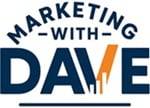Top Three Quotes
- “Copy cannot create desire for a product. It can only take the hopes, dreams, fears, and desires that already exist in the hearts of millions of people, and focus those already existing desires onto a particular product.”
- “The greatest mistake marketers make is trying to create demand.”
- “Your ad always begins with your market, and leads that market into your product.”
Book Theme
Breakthrough Advertising (not financially feasible to buy currently) centers on understanding and channeling existing consumer desires rather than attempting to create new ones. Schwartz emphasizes that successful advertising identifies the stage of awareness of the target audience and crafts messages that resonate with their existing desires and knowledge.
Why You Should Read This Book
This book is essential for marketers, copywriters, and business owners who seek to deepen their understanding of consumer psychology and enhance their advertising effectiveness. Schwartz provides a framework for identifying consumer desires and tailoring messages that align with their awareness levels, making it a timeless resource for crafting compelling advertisements.
Key Ideas and Arguments Presented
- Mass Desire: Advertising should tap into existing mass desires rather than attempting to create new ones.
- Stages of Awareness: Consumers exist in different stages of awareness about a product, ranging from unaware to fully aware. Effective advertising tailors messages to these stages.
- Stages of Sophistication: Markets evolve, and so should advertising strategies. As markets become more sophisticated, advertisers must find new ways to present their products.
- Headline Importance: The headline is crucial in capturing attention and should reflect the consumer’s stage of awareness and sophistication.
- Seven Techniques of Breakthrough Copy: Schwartz outlines techniques such as intensification, identification, gradualization, redefinition, mechanization, concentration, and camouflage to enhance advertising copy.
- Product Positioning: Positioning a product effectively involves understanding the market’s desires and presenting the product as the solution.
- Mechanism of Action: Explaining how a product works can enhance credibility and appeal.
- Emotional Appeal: Advertisements should connect with consumers on an emotional level to drive action.
- Proof and Credibility: Providing evidence, testimonials, and demonstrations can build trust and persuade consumers.
- Call to Action: A clear and compelling call to action is essential to guide consumers toward the desired response.
Book Outline
While the exact chapter titles are not publicly available, the book is structured to guide readers through understanding consumer desires, stages of awareness and sophistication, crafting headlines, writing compelling copy, and positioning products effectively.
Key Takeaways
- Successful advertising channels existing desires rather than creating new ones.
- Understanding the consumer’s stage of awareness and market sophistication is crucial.
- Crafting compelling headlines and copy that resonate with the target audience’s desires and awareness levels enhances effectiveness.
Key Techniques
- Intensification: Amplify the consumer’s desire for the product.
- Identification: Align the product with the consumer’s self-image or aspirations.
- Gradualization: Build the argument step by step to lead the consumer toward the desired conclusion.
- Redefinition: Present the product in a new light to differentiate it from competitors.
- Mechanization: Explain how the product works to satisfy the consumer’s desire.
- Concentration: Focus the message on a single, compelling idea.
- Camouflage: Present the advertisement as informative content to engage the consumer.
Author’s Qualifications
Eugene M. Schwartz was a renowned copywriter and advertising executive known for his expertise in direct-response advertising. His work has influenced generations of marketers and copywriters, and “Breakthrough Advertising” is considered a seminal text in the field.
Comparison to Similar Books
- “Scientific Advertising” by Claude Hopkins: Focuses on the scientific approach to advertising, emphasizing testing and measurement.
- “Ogilvy on Advertising” by David Ogilvy: Provides insights into advertising principles and practices from an agency perspective.
- “The Boron Letters” by Gary Halbert: Offers practical advice on copywriting and direct marketing through personal letters.
“Breakthrough Advertising” stands out for its deep psychological insights into consumer behavior and its strategic approach to crafting persuasive messages.
Target Audience
- Copywriters seeking to enhance their persuasive writing skills.
- Marketing professionals aiming to understand consumer psychology.
- Business owners looking to improve their advertising effectiveness.
- Entrepreneurs developing marketing strategies for new products.
- Advertising students studying foundational texts in the field.
- Digital marketers focusing on direct-response campaigns.
- Brand strategists interested in positioning and messaging.
Critical Response to the Book
“Breakthrough Advertising” is widely regarded as a classic in the advertising and marketing industry. Despite being out of print for years, it has maintained its reputation for providing timeless insights into consumer behavior and advertising strategy. Many professionals consider it an essential read for anyone serious about marketing.
One Sentence Takeaway
Effective advertising doesn’t create desire; it identifies and channels existing desires by aligning messages with the consumer’s awareness and sophistication levels.
